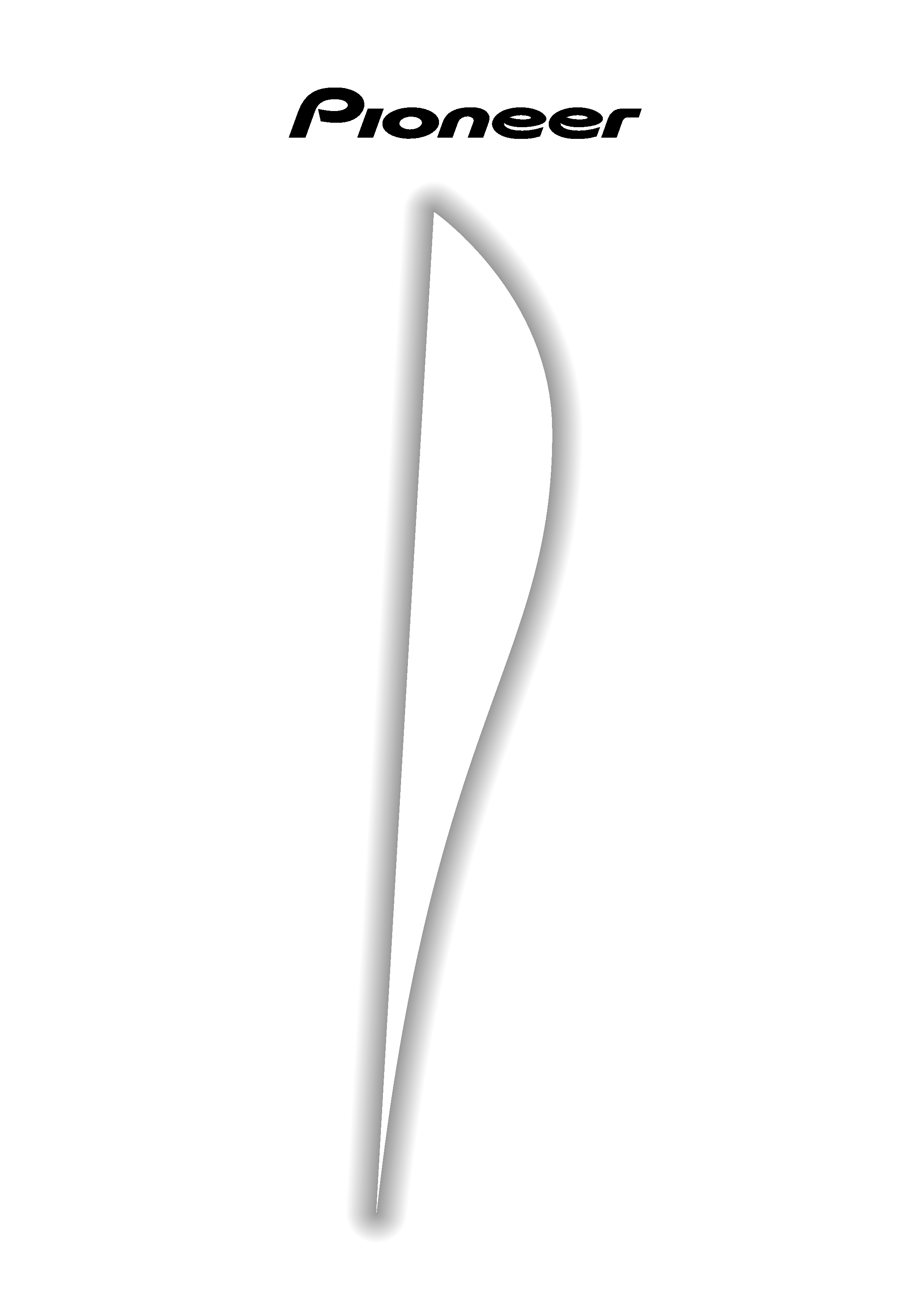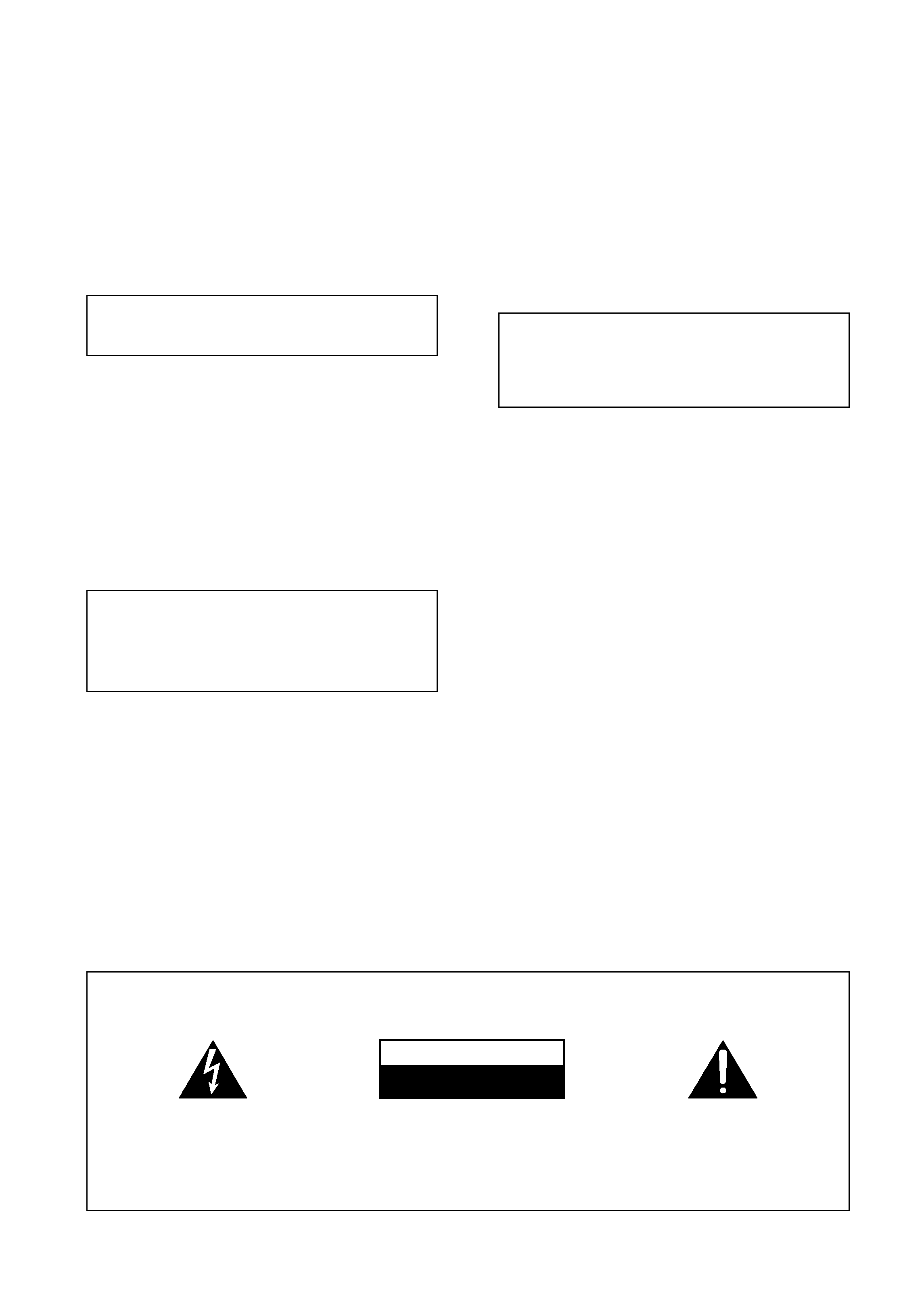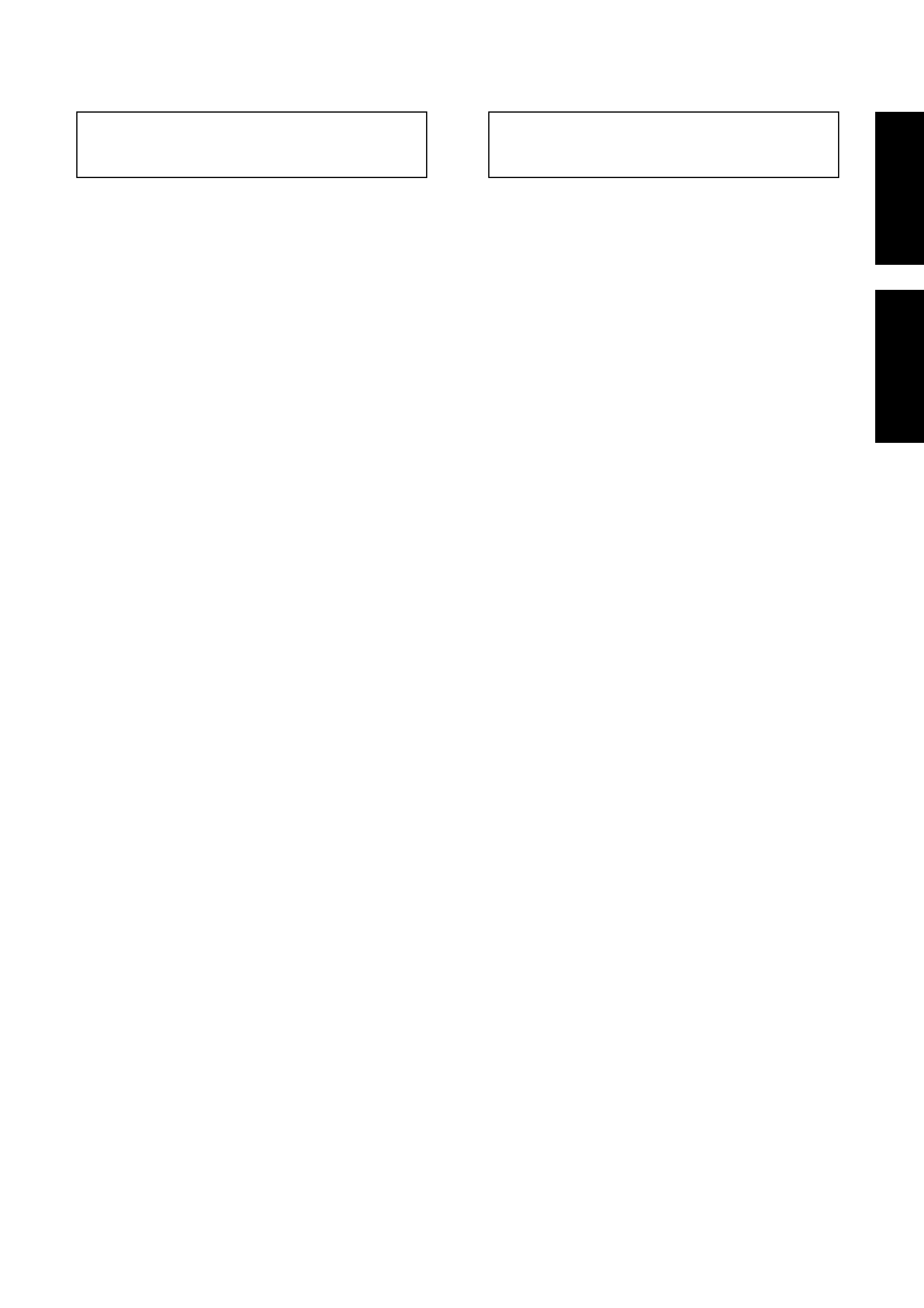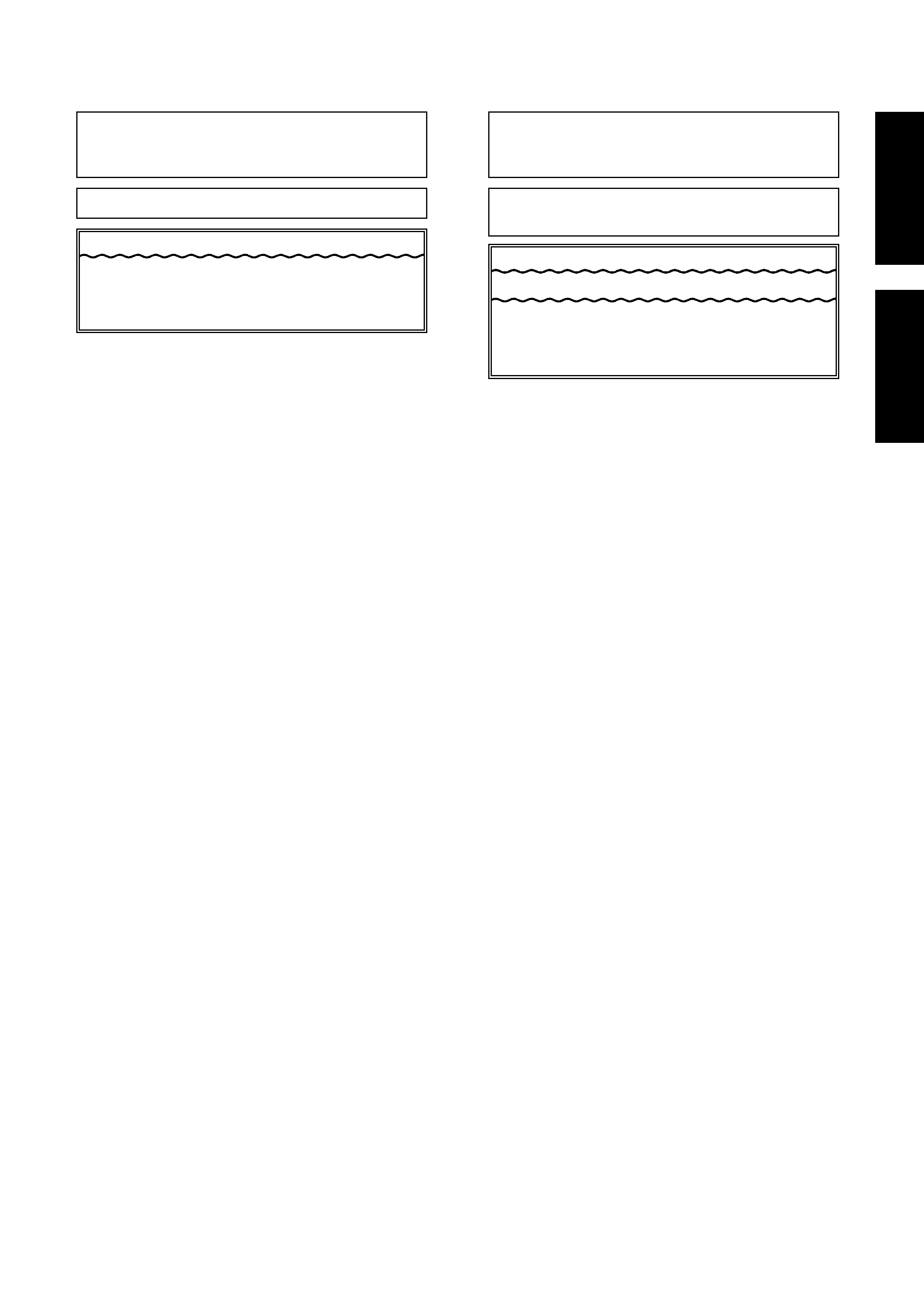
1
En/Fr
English
Fran
çais
Oparating Instructions
STEREO DOUBLE CASSETTE DECK
CT-W208R
DOUBLE PLATINE CASSETTE STEREO
Mode d'emploi

2
En/Fr
"This product complies with the Low Voltage
Directive (73/23/EEC), EMC Directives (89/336/EEC,
92/31/EEC) and CE Marking Directive (93/68/EEC).
Thank you for buying this Pioneer product.
Please read through these operating instructions so
you will know how to operate your unit properly. After
you have finished reading the instructions, keep them
in a safe place for future reference.
In some countries or regions, the shape of the power
plug and power outlet may sometimes differ from that
shown in the explanatory drawings. However, the
method of connecting and operating the unit is the
same.
WARNING: TO REVENT FIRE OR SHOCK
HAZARD, DO NOT EXPOSE THIS APPLIANCE
TO RAIN OR MOISTURE.
Ce produit est conforme à la directive relative aux
appareils basse tension (73/23/CEE), aux directives
relatives à la compatibilité électromagnétique (89/
336/CEE, 92/31/CEE) et à la directive CE relative
aux marquages (93/68/CEE).
ATTENTION: AFIN DE PREVENIR TOUS
RISQUES DE CHOC ELECTRIQUE OU DE
DEBUT D'INCENDIE, NE PAS EXPOSER CET
APPAREIL A L'HUMIDITE OU A LA PLUIE.
Nous vous remercions pour cet achat d'un produit
Pioneer. Nous vous demandons de lire soigneusement
ce mode d'emploi; vous serez ainsi à même de faire
fonctionner l'appareil correctement. Après avoir bien lu
le mode d'emploi, le ranger dans un endroit sûr pour
pouvoir s'y référer ultérieurement.
Dans certains pays ou certaines régions, la forme de la
fiche d'alimentation et de la prise d'alimentation peut
différer de celle qui figure sur les schémas, mais les
branchements et le fonctionnement de l'appareil restent
les mêmes.
IMPORTANT NOTICE
[For Canadian model]
The serial number for this equipment is located on the
rear panel. Please write this serial number on your
enclosed warranty card and keep it in a secure area.
This is for your security.
CAUTION: TO PREVENT ELECTRIC SHOCK DO
NOT USE THIS (POLARIZED) PLUG WITH AN
EXTENSION CORD, RECEPTACLE OR OTHER OUTLET
UNLESS THE BLADES CAN BE FULLY INSERTED TO
PREVENT BLADE EXPOSURE.
RISK OF ELECTRIC SHOCK
DO NOT OPEN
CAUTION
IMPORTANT
The lightning flash with arrowhead symbol,
within an equilateral triangle, is intended to
alert the user to the presence of uninsulated
"dangerous voltage" within the product's
enclosure that may be of sufficient magnitude
to constitute a risk of electric shock to persons.
CAUTION:
TO PREVENT THE RISK OF ELECTRIC SHOCK, DO NOT
REMOVE COVER (OR BACK). NO USER-SERVICEABLE
PARTS INSIDE. REFER SERVICING TO QUALIFIED
SERVICE PERSONNEL.
The exclamation point within an equilateral
triangle is intended to alert the user to the
presence of important operating and
maintenance (servicing) instructions in the
literature accompanying the appliance.
[For Canadian model]
This Class B digital apparatus complies with
Canadian ICES-003.
Cet appareil numérique de la classe B est
conforme à la norme NMB-003 du Canada.
ATTENTION: POUR PREVENIR LES CHOCS
ELECTRIQUES NE PAS UTILISER CETTE FICHE
POLARISEE AVEC UN PROLONGATEUR, UNE PRISE
DE COURANT OU UNE AUTRE SORTIE DE COURANT,
SAUF SI LES LAMES PEUVENT ETRE INSEREES A
FOND SANS EN LAISSER AUCUNE PARTIE A
DECOUVERT.
REMARQUE IMPORTANTE
[Pour le modèle Canadien]
Le numéro de série de cet appareil est inscrit sur le
panneau arrière. Veuillez noter ce numéro sur la carte de
garantie qui accompagne le lecteur et conserver celle-ci
en lieu sûr. Cette précaution peut être utile en cas de vol.

3
En/Fr
English
Fran
çais
POWER-CORD CAUTION
Handle the power cord by the plug. Do not pull out the
plug by tugging the cord and never touch the power
cord when your hands are wet a this could cause a
short circuit or electric shock. Do not place the unit, a
piece of furniture, etc., on the power cord, or pinch the
cord. Never make a knot in the cord or tie it with other
cords. The power cords should be routed in such a
way that they are not likely to be stepped on. A
damaged power cord can cause a fire or give you an
electrical shock. Check the power cord regularly. When
you find it damaged, ask your nearest PIONEER
authrized service center or your dealer for a
replacement.
CONTENTS
INSTALLATION .......................................................... 4
HANDLING CASSETTE TAPES .................................. 5
MAINTENANCE ......................................................... 7
CONNECTIONS ......................................................... 8
FRONT PANEL FACILITIES ...................................... 10
PLAYBACK ............................................................. 15
SINGLE PLAYBACK .............................................. 15
BLANK SKIP .......................................................... 16
RELAY PLAYBACK ................................................ 16
MUSIC SEARCH ................................................... 18
RECORDING ............................................................ 20
RECORDING ......................................................... 20
RECORDING MUTE .............................................. 21
ERASING A TAPE ................................................. 22
TAPE COPYING ....................................................... 23
TROUBLESHOOTING .............................................. 25
SPECIFICATIONS ..................................................... 29
NOTE IMPORTANTE SUR LE CABLE
D'ALIMENTATION
Tenir le câble d'alimentation par la fiche. Ne pas
débrancher la prise en tirant sur le câble et ne pas
toucher le câble avec les mains mouillées. Cela risque
de provoquer un court-circuit ou un choc électirque.
Ne pas poser l'apparreil ou um meuble sur le câble. Ne
pas pincer le câble. Ne pas faire de noeud avec le
câble ou l'attacher à d'autres câbles. Les câbles
d'alimentation doivent être possés de façon à ne pas
être écrasés. Un câble abîmé peut provoquer un risque
d'incendie ou un choc électrique. Vérifier le câble
d'alimentation de temps en temps. Contacter le service
aprèsvente PIONEER le plus proche ou le revendeur
pour un remplacement.
TABLE DES MATIERES
INSTALLATION .......................................................... 4
MANIPULATION DES CASSETTES ........................... 5
ENTRETIEN ................................................................ 7
RACCORDEMENTS ................................................... 8
COMMANDES DU PANNEAU AVANT .................... 10
LECTURE ................................................................. 15
LECTURE SIMPLE ................................................ 15
SAUT DES ESPACES VIERGES ............................ 16
LECTURE A RELAIS .............................................. 16
RECHERCHE DE SELECTION MUSICALE ........... 18
ENREGISTREMENT ................................................. 20
ENREGISTREMENT .............................................. 20
SOURDINE A L'ENREGISTREMENT .................... 21
EFFACEMENT D'UNE BANDE ............................. 22
COPIE DE BANDE ................................................... 23
GUIDE DE DEPANNAGE ......................................... 27
FICHE TECHNIQUE ................................................. 30

4
En/Fr
INSTALLATION
When installing the deck, avoid locations with
high temperatures or humidity, and make sure
that the deck receives adequate ventilation.
7 Do not install the deck in locations subject to direct
sunlight, or near a space heater or other heating
device, as this may cause damage to the finish or
internal parts.
7 Malfunctions may also result if the deck is installed
in an excessively humid or dusty location. Avoid
installing the deck next to kitchen counters or other
locations subject to oily smoke or humidity.
7 If the deck is placed directly on top of an amplifier,
it may pick up humming or other noise. Also, if the
amplifier generates a large amount of heat, the deck
may malfunction.
7 If the deck is located near a television set, it may
pick up interference noise, which will be recorded
as a whistling sound on the tape. If this happens,
move the deck further away from the television set
or turn the television set off when operating the
deck.
7 Do not place a cloth over the deck, or block the
ventilation slots in any way. The ventilation slots on
this deck are necessary to keep internal parts cool.
If they are blocked, the deck may malfunction.
CONDENSATION
When the deck is moved from a cold location to a
warm location, or when the temperature of the room
changes suddenly, condensation may form on the
mechanical parts. This can adversely affect the
performance of the deck. To prevent this, wait for about
one hour to allow the deck to adjust to the room
temperature. To prevent condensation when heating a
room, raise the temperature slowly.
INSTALLATION
Pour installer la platine, éviter les endroits
très chauds ou humides et s'assurer que la
platine est correctement ventilée.
7 Ne pas installer la platine dans un endroit en plein
soleil ou à proximité d'un dispositif de chauffage
qui pourrait affecter la finition extérieure et les pièces
internes.
7 Des dysfonctionnements peuvent se produire si la
platine est installée dans un endroit excessivement
humide ou poussiéreux. Eviter la proximité de
cuisines ou d'autres endroits où se dégagent des
vapeurs huileuses ou de l'humidité.
7 Si la platine est installée directement sur un
amplificateur, elle risque de capter un ronflement
ou d'autres parasites. En outre, la platine peut ne
pas fonctionner correctement si l'amplificateur
génère une forte chaleur.
7 Si la platine est placée près d'un téléviseur, elle
peut capter des interférences qui seront enregistrées
sous forme de sifflement sur la bande. Dans ce
cas, éloigner la platine du téléviseur ou couper
l'alimentation du téléviseur lors de l'utilisation de la
platine.
7 Ne recouvrez pas la platine d'une étoffe et ne
bouchez pas les fentes de ventilation. Ces fentes
sont nécessaires au refroidissement des pièces
internes. Si elles sont obturées, la platine risque de
ne pas fonctionner correctement.
CONDENSATION
Si la platine est transportée d'un endroit froid à un
endroit chaud, ou si la température de la pièce change
rapidement, de la condensation peut se former sur la
surface des pièces mécaniques et affecter les
performances de la platine. Dans un tel cas, attendre
environ une heure pour laisser la platine s'adapter à la
température de la pièce.
Pour èviter la formation de condensation lorsque vous
chauffez une pièce, augmentez lentement la
tempèrature.

5
En/Fr
English
Fran
çais
HANDLING CASSETTE
TAPES
TIPS ON CASSETTE TAPES
÷ Leader tape (which cannot be recorded on) is
provided at the beginning of a cassette tape. Let
the tape run for about 5 seconds before starting to
record, to allow the leader tape to clear the recording
head.
÷ Do not leave a cassette tape exposed to the
environment. Store the cassette in its case after
use so that dust and dirt do not adhere to the tape,
and so the tape will not get slack. Store tapes in a
location free from magnetism, dust, dirt, oil, heat
and humidity.
÷ If cassette tapes are irregularly wound, the tape
may get jammed in the rollers. This can cause
damage to both the tape and the deck. If you are
not certain whether the tape is wound evenly, fast
forward or rewind the tape from beginning to end,
to make sure that the tape is properly wound.
Do not use tapes longer than 90 minutes in length
Because over the C-90 tapes are very thin, they can
easily jam in the pinch rollers and capstan, and they
often are subject to other problems such as irregular
winding.
MANIPULATION DES
CASSETTES
CONSEILS SUR L'EMPLOI DES
CASSETTES
÷ Une bande amorce (sur laquelle il n'est pas possible
d'enregistrer) se trouve au début des cassettes.
Laisser la bande défiler pendant environ cinq
secondes avant de commencer l'enregistrement
pour que l'amorce air dépassé la tête
d'enregistrement.
÷ Ne pas laisser la cassetten n'importe où. Remettre
la cassette en place dans son boîtier avant son
utilisaiton de sorte que de la poussière ou des
saletés n'adhèrent pas à la bande et n'empêche
pas qu'elle ne se détende. Ranger les cassettes
dans un endroit à l'abri des effets de magnétisme,
de la poussière, de la saleté, d'huile et de l'humidité.
÷ Si la bande de la cassette est irrégulièrement
enroulée, elle risque de se prendre dans les galets.
Cela peut être la cause de dommage à la bande et
à la platine elle-même. Si l'on n'est pas sûr que la
bande est enroulée de manière uniforme, la faire
avancer ou reculer rapidement du début à la fin
pour s'assurer qu'elle est correctement enroulée.
N'utilisez pas de cassette dont la durée
dépasse 90 minutes.
La bande de ces cassettes étant très mince, elle
peut aisément s'enrouler sur les galets presseurs
ou le cabestan; en outre, le rebobinage de ce genre
de bande est le plus souvent irrégulier.
